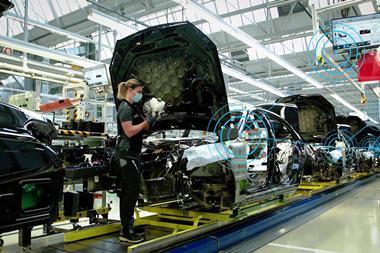The electrification of Ford’s Halewood plant is more than just a strategic pivot; it’s a testament to the company’s vision for sustainable automotive manufacturing. By producing over 420,000 electric drive units annually, the plant will power Ford’s top-selling EV models and support Europe’s transition to zero-emission vehicles.

Ford’s historic Halewood plant in Merseyside has entered a new phase, beginning production of electric drive units to power its next generation of vehicles. The launch is a critical step in Ford’s overall electrification strategy, with the facility playing a pivotal role in supporting the company’s ambitious target of achieving zero-emission vehicle sales in Europe by 2030.
The transformation is backed by a £380 million ($485.5 million) investment, including £30.9 million ($40.7 million) from the UK government’s Automotive Transformation Fund. The result is a state-of-the-art production hub capable of delivering 420,000 electric drive units annually. These components will power a range of Ford’s electric models, including the all-electric Puma Gen-E and the E-Transit Custom, two of the most popular vehicles in the UK.
“The Halewood facility’s capacity to produce electric drive units for 70% of Ford’s European EVs underscores its strategic importance”
The models driving Ford’s EV strategy
The Halewood-produced electric drive units will underpin several key vehicles in Ford’s lineup, reinforcing its production presence:
-
Puma Gen-E: The all-electric version of Ford’s best-selling compact crossover boasts a range of up to 376 km (233 miles) on a single charge and is equipped with fast-charging capabilities. As a cornerstone of Ford’s EV portfolio, the Puma Gen-E embodies efficiency and sustainability.
-
E-Transit Custom: This electric variant of the UK’s top-selling vehicle combines zero-emission performance with commercial versatility. Designed for urban logistics and fleet operations, it represents a significant leap toward sustainable transportation.
-
E-Tourneo Custom: A multi-purpose electric vehicle tailored for both personal and business use, offering flexibility alongside eco-friendly credentials.
-
E-Transit Courier and E-Tourneo Courier: Compact electric vans ideal for urban environments, addressing the growing demand for efficient and low-emission transportation solutions.
Halewood’s impact on UK jobs and skills
The electrification of the Halewood plant safeguards hundreds of jobs while equipping the workforce with skills essential for EV component manufacturing. Employees have undergone extensive training to master the complexities of electric drive unit assembly, ensuring that the plant’s output meets Ford’s exacting standards.

“With Halewood leading the way as our first in-house EV component manufacturing site in Europe, we’re building a thriving future together,” said Kieran Cahill, Ford’s European Industrial Operations Vice-President. Cahill emphasised that Halewood’s transformation is not only vital for Ford but also for the broader UK automotive sector as it adapts to electrification.
More Ford Stories
- Ford revises EV strategy and boosts hybrid production
- Bolstering battery manufacturing with Chris White’s global role
- Ford Otosan manufacturing for an economy in transition
- How Ford’s Marc Dugas supercharges battery pack assembly
Ford’s drive towards zero-emissions: opportunities and challenges
Ford’s shift to EVs aligns with the European Union’s climate goals, which include a ban on the sale of new petrol and diesel vehicles by 2035. The Halewood facility’s capacity to produce electric drive units for 70% of Ford’s European EVs underscores its strategic importance. By 2025, Ford aims to have nine electric vehicles on the road in Europe, with Halewood at the heart of this electrification drive.
But while Ford’s commitment to electrification is clear, the broader UK automotive industry faces challenges. Executives have raised concerns about aggressive net-zero policies and their impact on competitiveness. These policies, while essential for reducing emissions, require significant investment and adaptation from automakers.
Despite these hurdles, Ford’s investment in Halewood seems to signal the OEM’s confidence in the UK’s role as a hub for EV manufacturing, while the support from the Automotive Transformation Fund highlights the government’s commitment to fostering innovation and maintaining the country’s position in the global automotive supply chain.
Ford’s investment is an example of how OEM’s should be balancing environmental goals with economic growth. With its electric drive units set to power some of Europe’s most popular vehicles, Halewood plays an important role in the global transition to electric mobility.






































No comments yet